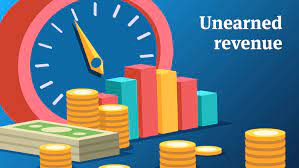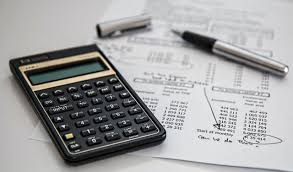The sales value at which a company earns no profit or loss is referred to as “break-even sales.” In other words, break-even sales are the dollars of revenue that precisely cover a company’s fixed and variable expenses. We’d go over how to use the formula to calculate break-even sales dollars units.
Break-Even Sales
Break-even sales cover the point at which a company’s variable and fixed costs, such as rent, administrative salaries, and advertising. Regardless of sales volume, businesses incur some level of fixed costs. The ratio of fixed costs to contribution margin equals the break-even sales value, while the ratio of fixed costs to contribution margin equals the break-even volume.
Profit targets can be incorporated into the break-even calculation. Profit-adjusted break-even sales are calculated by dividing the sum of fixed costs plus minimum profits by the contribution margin ratio, whereas profit-adjusted break-even volume is calculated by dividing the sum of fixed costs plus minimum profits by the contribution margin.
Considerations
Companies can use break-even figures to determine how sensitive profits are to changes in costs and volumes. If variable costs rise, a company may be forced to raise prices, cut fixed costs, or do both to avoid losses. Companies can also use cost-volume-profit relationships to determine the best product mix for their products.
Break-Even Sales Formula
This break-even sales formula can help you decide whether to pursue a business idea or optimize your current operations. You can use them to test pricing strategies and identify opportunities to increase revenue and reduce costs.
Break-even sales in units = Fixed costs ÷ Contribution margin per unit
Break-even sales in units formula
Your break-even sales in units will tell you how many units you need to sell to make a profit. If you can sell more units after this point, you’ll be profitable. If you are unable to sell enough products or services to meet this goal, your business will lose money.
To calculate break-even sales, multiply your fixed costs by your contribution margin per unit. As a result, you can break this formula even further and write it as follows:
Break-even sales in units = Fixed costs ÷ (Sales price per unit – Variable cost per unit)
Once you’ve determined your break-even point in units, you’ll profit on every product sold after that point. Once you’ve passed the break-even point, your contribution margin will tell you how much profit you’ll make on each unit.
But what if you want to know your break-even sales in dollars using the formula?
Break-even sales in dollars = Sales price per unit * Break-even sales in units
Break even sales in units in dollar formula
Once you’ve determined your break-even point, you can begin experimenting with other formulas. This break-even sales formula, in particular, will allow you to test different unit selling prices.
You can multiply your break-even sales in units by the sales price per unit. This provides you with the monetary value of your break-even sales.
You can then play around with different figures for your sales price or unit sales volume. You can quickly enter metrics into the break-even analysis calculator to see where you net out.
For example, you could raise your selling price, requiring you to sell fewer units to break even. You could also lower your price, raising your unit break-even point even further.
Break-Even Sales Formula Examples
Consider a company that is in the business of lathering shoes. According to the cost accountant, the total variable costs incurred last year were $1,300,000 on a $2,000,000 sales revenue. Calculate the company’s break-even sales if its fixed costs for the year totaled $500,000.
Solution:
The formula for calculating break-even sales units is as follows:
Break-Even Sales = Fixed Costs * Sales / (Sales – Variable Costs)
Break-Even Sales = $500,000 * $2,000,000 / ($2,000,000 – $1,300,000) = $1,428,571
As a result, to break even with the current mix of fixed and variable costs, the company must achieve a minimum sale of $1.43 million.
How to Calculate Break-Even Sales
To calculate your break-even sales, you must first understand several other business metrics and how they apply to your organization. You’ll need to know how to calculate the sales price per unit, fixed costs, variable costs, revenue, and contribution margin.
#1. Unit sales price
This is the price you intend to charge customers. It’s in your best interest to set a price with large enough margins to quickly break even. However, you don’t want to scare customers away by charging too much. A reasonable selling price is found near the intersection of supply and demand.
#2. Fixed expenses
Fixed costs are expenses that must be paid regardless of production volume or service output. Even if you sell no products, you will be responsible for covering these costs every month.
#3. Variable unit costs
Your variable costs per unit are the other component of your total costs. This metric calculates the cost of producing each unit or service. The more units or services you sell, the more money you must pay.
#4. Revenue
Before deducting total costs, revenue is the amount of money you make from selling your products or services. Consider it the money that is coming in the door. You can use the following simple revenue calculation.
Revenue = Number of units sold * Sales price per unit
Your revenue is also used to calculate the profit of your company. Profit is simply the difference between total revenues and total costs.
#5. Contribution margin
The contribution margin of a product indicates how much each sold unit contributes to overall revenue. Products with a high contribution margin contribute to your company’s growth. The following formula can be used to calculate the contribution margin per unit.
Contribution margin per unit = Sales price per unit – Variable cost per unit
A high contribution margin per unit should be your goal. If a unit has a high positive contribution margin, it means it contributes significantly to your profit margin.
#6. Contribution margin ratio
The contribution margin ratio and the contribution margin are similar. The contribution margin ratio differs in that it is expressed as a percentage of the sales price per unit rather than as a dollar amount. Furthermore, the contribution margin ratio can be calculated using the formula below.
Contribution margin ratio = Contribution margin per unit ÷ Sales price per unit
Knowing this ratio enables you to answer questions like, “What percentage of this unit’s sales price directly contributes to my revenue?”
How to calculate Break-Even Sales
Break-even sales are the dollars of revenue at which a company earns no profit. This sales amount covers a company’s underlying fixed expenses as well as all variable expenses associated with sales. Knowing the break-even sales level is useful because it provides management with a baseline for the minimum amount of sales that must be generated in each reporting period to avoid losses.
If a business downturn is expected, for example, the break-even level can be used to reduce fixed expenses to match the expected future sales level.
Divide all fixed expenses by the average contribution margin percentage to calculate break-even sales. Sales minus all variable expenses, expressed as a percentage, is the contribution margin. The break-even sales in dollars formula are as follows:
Fixed expenses ÷ Contribution margin percentage = Break-even sales
Break even sales formula in dollars
Examples of Break-Even Points
Let’s calculate some examples of how to figure out the break-even point.
Sam’s Sodas is a Seattle-based soft drink manufacturer. He’s thinking about launching a new soft drink called Sam’s Silly Soda. He wants to know how this new drink will affect the company’s finances. So he decides to calculate the break-even point so that he and his management team can determine whether the investment in this new product is worthwhile.
His accounting costs for the first month of product production are as follows:
- Fixed Costs = $2,000 (total, for the month)
- Variable Costs = .40 (per can produce)
- Sales Price = $1.50 (a can)
Calculating the Break-Even Point in Units using Formula
Fixed Costs ÷ (Sales price per unit – Variable costs per unit)
- $2000/($1.50 – $.40)
- Or $2000/1.10 = 1818 units
To reach the break-even point, Sam must sell just over 1800 cans of the new soda in a month.
Calculating the Break-Even Point in Sales Dollars using Formula
Fixed Costs ÷ Contribution Margin
A contribution margin is a difference between a product’s price and its manufacturing costs. The break-even sales dollars formula is as follows:
(Sale price per unit – Variable costs per unit)/Sale price per unit
Break-Even Sales Problems
Before relying on the break-even sales concept, there are a few things to consider. They’re listed below.
#1. Variable contribution margin
The contribution margin may not be consistent from month to month. If a company sells a different mix of products each month, each with a different margin, the resulting blended margin for the entire business will most likely change. As a result, the break-even sales level will change.
#2. Historical basis
The fixed expense figure in the formula’s numerator is based on historical fixed expenses. Use an estimate of what fixed expenses are expected to be during the planning period for planning purposes, as these expenses may differ from the historical figure.
Conclusion
Now that you’ve completed a break-even sales analysis, it’s time to start plugging in metrics to put your current business or startup idea to the test.
Make some quick projections and plug them into the break-even formula if you’re thinking about starting a new business. The Small Business Administration has a great tool for calculating startup costs that you can use to back up your projections and calculate whether your idea is worth pursuing.
Furthermore, if you already own a business, you can always improve your pricing strategies or look for ways to increase your profit margins. A break-even analysis is a great way to ensure profitability and never leave money on the table.
Break Even Sales FAQs
How do you break-even in sales?
To calculate the break-even point based on units: Subtract the variable cost per unit from the revenue per unit. Fixed costs are those that remain constant regardless of how many units are sold. The revenue is the price at which you sell the product less variable costs such as labor and materials.
What does break-even sales show?
The break-even price is the amount of money required to sell an asset to cover the cost of acquiring and owning it. CVP (Cost-Volume-Profit) Analysis The cost-volume-profit (CVP) analysis examines how different levels of sales and product costs affect operating profit.
What level of sales is necessary to break-even?
It is the amount of money that each unit’s sale will contribute toward covering total fixed costs. The breakeven level is the number of units that must be produced and sold in order to generate a sufficient contribution margin to cover fixed costs.
Why is break-even point important?
The higher the business’s fixed costs, the higher the breakeven point, and thus the more offerings it must sell. Businesses should evaluate their true cost of doing business and their prices while determining the breakeven point.
Related Articles
- BREAK-EVEN PRICE: What is Break Even Point In Accounting?
- BREAK EVEN CALCULATOR for Social Security and Mortgage (+ Best Options)
- How to Calculate Break Even Point (Synonym: Calculate Break Even Point)
- Financial Plan: Easy Steps To Make a Solid Financial Plan
- FIXED COST: Meaning, Examples, Formula, & How to Calculate






